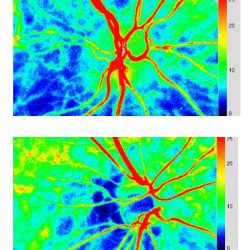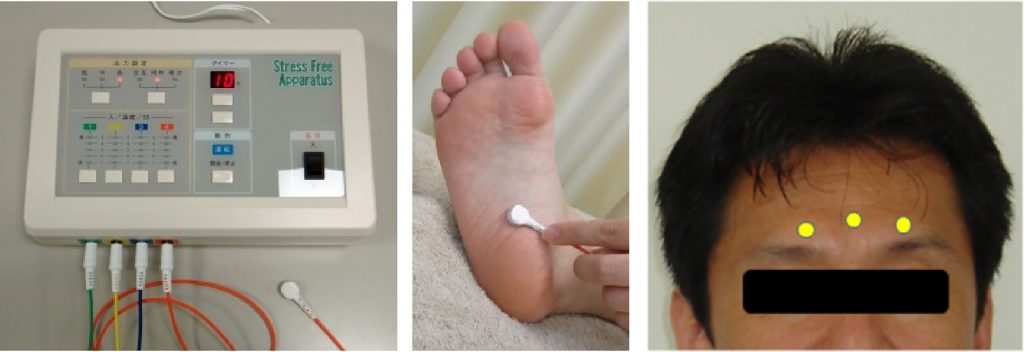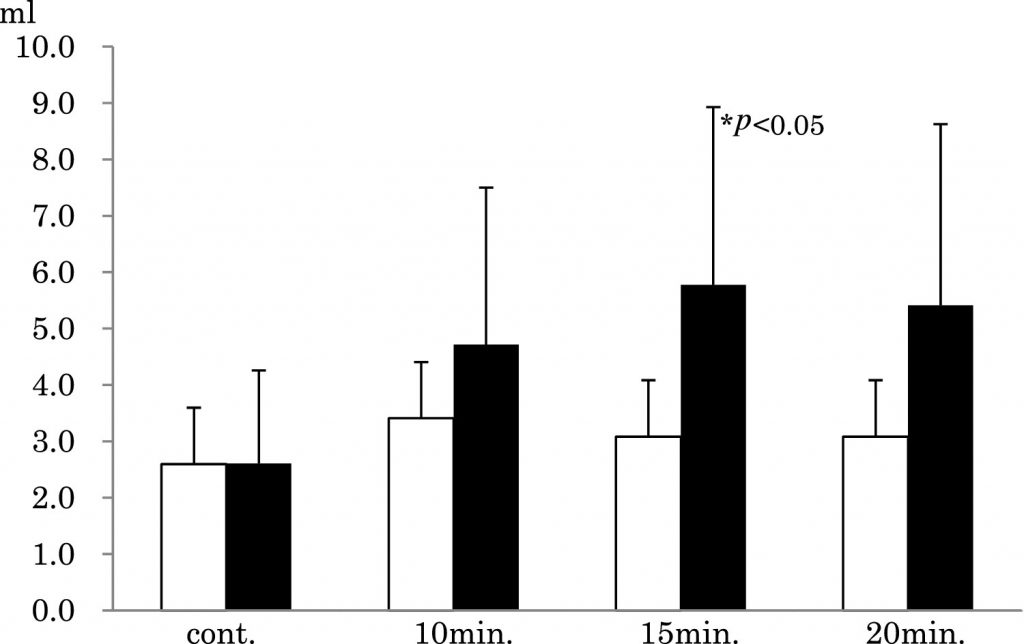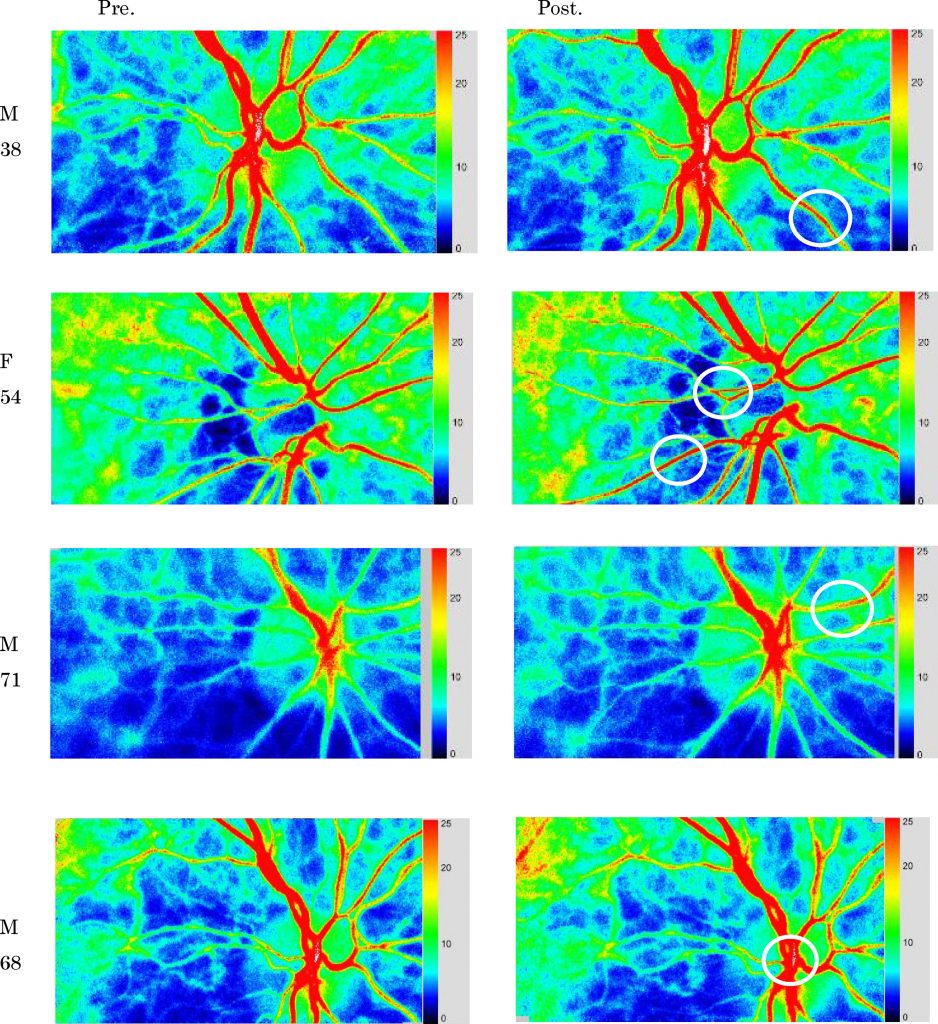In this small pilot study, published in Integrative Medicine Research (Dec. 2017), researchers evaluated the influence of pinpoint plantar long-wavelength infrared light irradiation (stress-free therapy; SFT) on chorioretinal hemodynamics (retinal artery and vein blood flows) as well as its influences on atherosclerosis-inducing factors (triglycerides; TG, low-density lipoprotein cholesterol; LDL-C, high-density lipoprotein cholesterol; HDL-C), and vascular endothelial growth factor (VEGF) in patients with dyslipidemia.
In previous studies, it was reported that SFT suppresses the stress reaction mediated by cortisol and and contributes to alleviation of insulin resistance and elevation of intracranial blood flow in patients with type 2 diabetes mellitus (DM). And, the same researchers demonstrated that SFT activates the immunoresponsive CD19+ CD24hi and CD38hi B-reg cell groups and induces the expression of IL-10 on lymphocytes.
It has been reported in recent years that the risks for vascular dementia (VD) and Alzheimer disease (AD) onset are high in patients with diseases such as dyslipidemia, hypertension and diabetes mellitus (DM). It is also known that insulin resistance and hyperinsulinemia, which are problems associated with type 2 DM, can induce low insulin levels in the central nervous system which are closely associated with the onset of AD through reduction of cerebral blood flow, accumulation of amyloid-β, phosphorylation of tau protein and so on. In addition, diabetic retinopathy is known to be associated with abnormal VEGF expression and AD.
Infrared Light Irradiation Methods
This study involved 4 untreated patients with dyslipidemia (3 men and 1 woman; mean age, 54.8 ± 13.5 years) and 4 healthy volunteers (2 men and 2 women; mean age, 48.8 ± 9.7 years; undergoing only placement of a probe without irradiation) serving as SFT controls.
Irradiation for SFT was applied to 4 points in total, including the point of intersection of the vertical line of the medial malleolus with the line joining the first and second metatarsal bones of the planta, the right and left orbital foramens and the depressed point one finger breadth above the center of the line joining the medial ends of the eyebrows (the latter 3 points were selected in view of increases in chorioretinal blood flow).
IMAGE 1
The maximal effect was obtained via 15 minutes-treatment. Changes in blood flow to the facial artery were analyzed using a laser Doppler flow meter (Advance ALF 21) in a similar manner as a previous report (Laser Therapy 24,1:27-32). Three SFT sessions were applied to each participant at a frequency of once per week. See FIGURE 1 BELOW
Results
In all 4 patients with dyslipidemia, LDL-C had been higher than normal before SFT (151.3 ± 4.9 mg/dl) and decreased to 131.5 ± 9.1 mg/dl after SFT. TG was 309.3 ± 154.4 mg/dl before SFT and decreased to the normal range after SFT (154.8 ± 30.5 mg/dl) (Table 1). HDL-C showed no marked change, remaining within the normal range. VEGF rose after SFT in cases in which levels before SFT had not exceeded the upper limit of the normal range of 38.3 pg/ml, while it tended to decrease after SFT in cases in which levels before SFT had exceeded the normal range. SEE TABLE 1
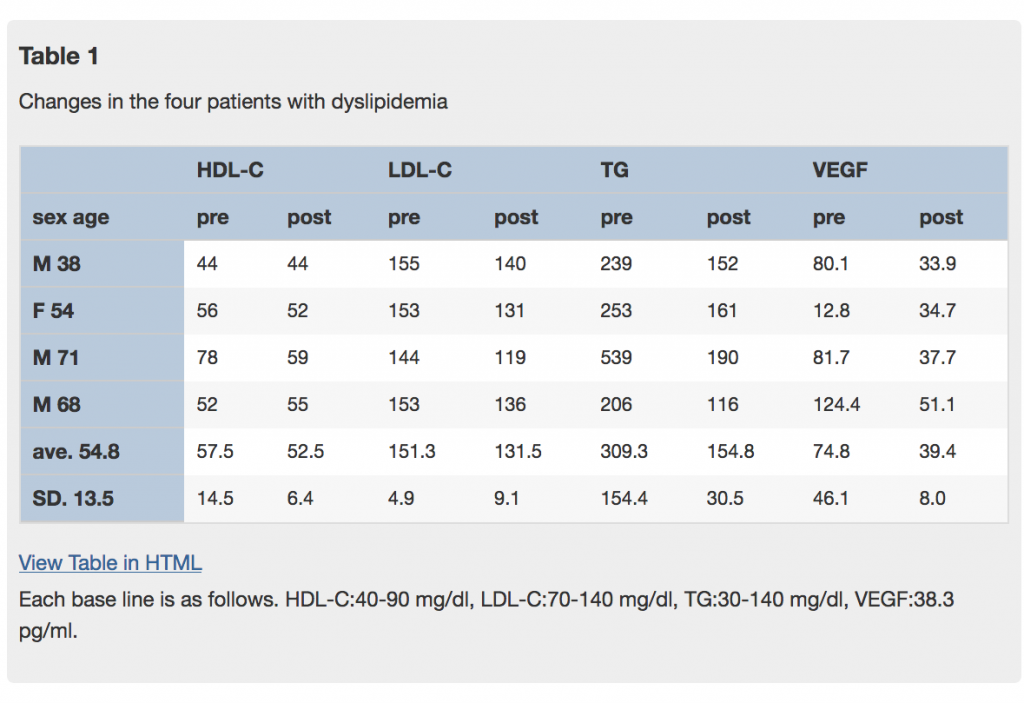
The results of this study suggest that SFT, i.e. irradiation delivered to frontal points, reduces TG and LDL-C levels to within the normal ranges in patients with dyslipidemia, accompanied by increased chorioretinal blood flow and normalization of VEGF, raising the possibility of SFT contributing to the normalization of atherosclerosis-inducing factors. Our results suggest that SFT for dyslipidemia reduces TG and LDL-C levels, enhances chorioretinal blood flow and promotes the normalization of VEGF levels, thereby contributing to the normalization of atherosclerosis-inducing factors and, ultimately, the prevention of atherosclerosis.
The researchers noted that further studies are needed to show whether the effect of the SFT on retinal blood flow is just ‘temporary’ or ‘long lasting persistent’ and that imaging other than laser speckle flowgraphy may present better visual data.
Click Here for Full Text Study

